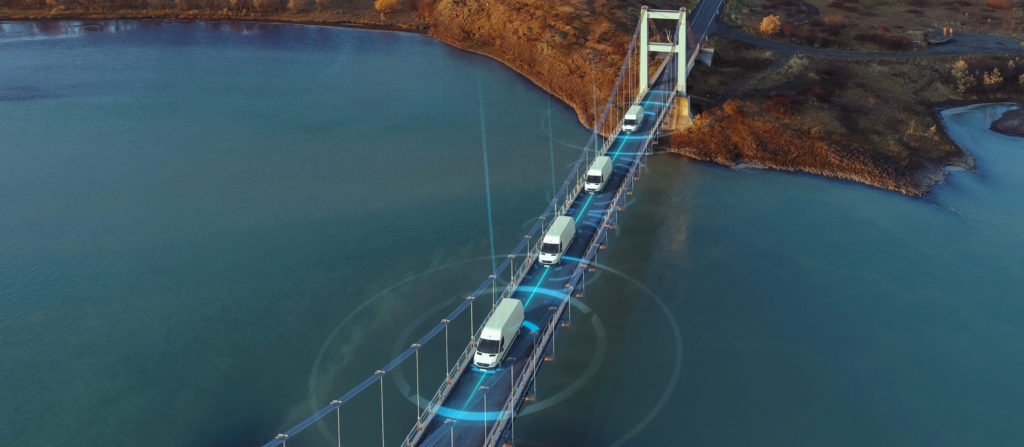
We recently reported on the growing number of trucking technology companies merging with startups to stay competitive in the industry. To avoid inefficiencies, though, convergence is key.
With these vendors bringing in more aspects of modern trucking tech into their businesses, hardware can easily become redundant. Therefore, many managers are having to work with various data streams, platforms, and logins.
For example, when Omnitracs first acquired SmartDrive, tech convergence became a priority. The company soon found that it could lower overall costs for fleets by merging in-cab applications, core devices, and data plans. It also discovered that carriers could make similar convergences on the back office side instead of having to work with a variety of host systems.
According to the company’s CEO, Ray Greer, Omnitracs was also able to consolidate data gathered by apps, onboard video capabilities, and telematics in order to boost visibility and bring the company further insight.
“You can begin to mine that to better understand the environment, better understand the conditions to improve the coaching of the driver, [and] maybe even [better understand] the management of the asset, the freight, and the delivery,” said Greer.
“This would not have been possible without venture capital funds,” added Bart De Muynck, research vice president of Gartner Inc., explaining that venture capital has helped the industry exponentially by bringing in new vendors and by helping fleets steer their companies in the direction of lower-cost and cloud-based management and safety software.
According to Greer, though, companies newer to the market have a more difficult time rising up against the competition and boosting their own technology than a more substantiated company would, and typically end up leaving the industry by becoming acquired.
In fact, most startups keep their eyes on rapid growth and high selling value as opposed to steady increases in profits.
“They’re building for growth, and they’re building to sell,” said James Langley, senior vice president of Trimble Transportation.
Convergence can become particularly tricky when trucking tech start ups produce some “really compelling solutions” regarding methods of data utilization and artificial intelligence application, Langley said, but they also will often create specific solutions for particular problems, which makes it difficult for their fleet customers to incorporate that solution into the software they’ve already implemented.
Langley came across this exact problem when he served as president of Dart Transit Co., a truckload carrier based in Eagan, Minnesota.
“I’d have people come in and present some really awesome technologies, and my next question was, ‘OK, does that mean I need another sign-on? Does that mean I need another portal? Does that mean I need another reporting tool?’ Because if that’s the answer, I don’t want it, because my people only have so much time in a day,” he remembered.
The trucking technology market has also become much more complicated in recent years as consolidation continues to become more common, and many vendors that work in competition in specific market segments are also, oftentimes, collaborating on certain tech integrations within other areas of the market in an effort to bring further convenience to the customers they share.
“My view, as the leader of Trimble Transportation, is [that] we have to embrace ‘coopetition’ because we have to support customer choices,” said Langley.
With all of these new and unique applications for trucking companies, many fleets will chose multiple kinds of technology to suit their individual needs, Langley added.
“If we want people to buy more of our solutions, our Trimble-branded solutions, it has to be the one plus one equals three. They’ve got to be better together,” he explained. “We’ve got to win on [the] value proposition. We can’t hold a customer back if we don’t have exactly what they need.”
The industry, as a whole, seems to expect these kinds of consolidations within trucking tech to continue in the coming years, especially as more improvements and advances are made in electric and automated vehicle technology, final-mile delivery capabilities, machine learning, and data analytics. The boosted innovation and investment that will come with these changes will undoubtedly bring more consolidation in this sector.
Finally, many companies won’t be able to go all-in on one platform unless it implements much better user experiences, better overall capabilities, and a much lower cost, De Muynck explained.
“On the shipper side, we have already seen a much larger desire for a single platform and supplier,” he said. “We have not yet seen the same appetite on the carrier side. The economic conditions of the carriers mean they have to continue to use their software for a lot longer, whereas shippers have no issue changing out a TMS, for example, after three years.”
Reader Interactions